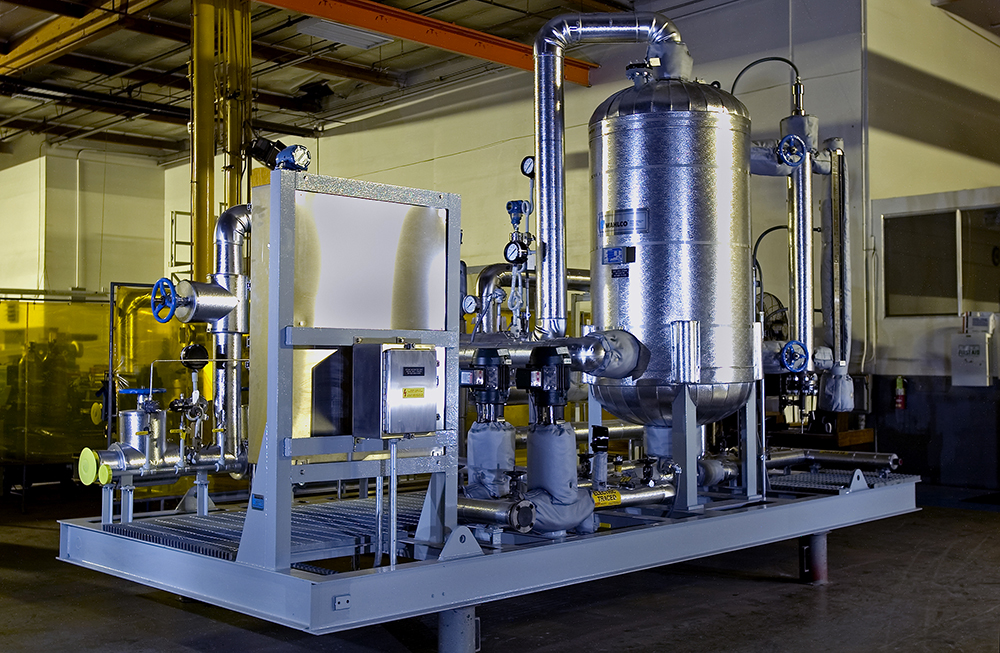Anhydrous Ammonia Delivery System: An Economical Ammonia Reagent
Anhydrous Ammonia is an economical reagent choice for utility SCR installations. The disadvantage of anhydrous ammonia is that it is classified as a hazardous material, and is subject to strict regulations and Risk Management Procedures for transport, storage, and handling. These requirements result in additional costs and complications in permitting and may generate local community concerns over transporting hazardous materials.

Ammonia Overview
Ammonia reagent is typically supplied as commercial grade anhydrous ammonia or aqueous ammonia. Anhydrous ammonia is significantly less expensive for SCR applications; however, aqueous ammonia is often specified due to permitting and safety considerations in transport, storage and handling. Commercial grade anhydrous ammonia is 99.5 – 99.7% pure, with a minimum of 0.3% water content. Aqueous ammonia or ammonia hydroxide can be specified and purchased over a range of ammonia contents.
Typically, aqueous ammonia is specified at concentrations of 19.0%, 25%, or 29% pure ammonia in water. Due to the additional cost, typically 4 – 5 times as expensive (on a basis of weight of pure ammonia) as anhydrous ammonia, and the additional cost of transport and storage of the water content, aqueous ammonia is used only when anhydrous ammonia is not a viable option. Aqueous ammonia is also significantly more expensive to vaporize due to the energy required to evaporate the water content.
Products & Services
- Anhydrous Ammonia Vaporizers
- Electric
- Steam
- Hot Water
- Unloading Systems
- Storage Tanks & Accessories
- Forwarding / Feed Pump Skids
- Ammonia Flow Control Units (AFCU’s)
- Ammonia Injection Grids (AIG’s)
- Design & Fabrication
- Full Turnkey Systems
- Start-Up Maintenance Services
- O&M and Safety Training
